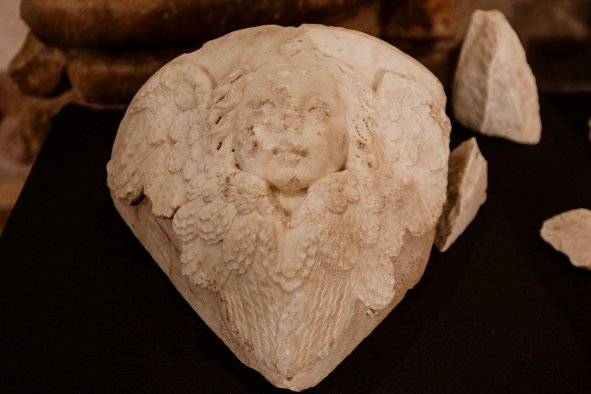Archaeologists have uncovered evidence of a long-lost early Christian community, which sheds new light on the religion's history.
Excavations conducted in the village of Samahij, Bahrain, between 2019 and 2023 revealed the remains of a large building complex, the University of Exeter in the United Kingdom announced in a press release.
Radiocarbon dating work undertaken at the site has indicated that this building was occupied between the mid-4th and mid-8th centuries. Based on the architecture and the associated material finds, researchers believe the building was home to a Christian community, perhaps as part of a monastery or, more likely, serving as an episcopal palace.
Timothy Insoll, with the Institute of Arab and Islamic Studies at the University of Exeter, who co-led the project, told Newsweek that this structure represents the first, earliest, and only Christian building discovered to date in Bahrain. It is also among the earliest Christian buildings in the entire Persian Gulf region.
Today, Christianity is not often associated with the Persian Gulf, but a branch of the religion known as the Church of the East (sometimes referred to as the Nestorian Church) flourished in the region until its people underwent widespread conversion to Islam, beginning in the early 7th century after its establishment.
The Christian building at Samahij (also written "Samaheej") appears to have been abandoned after the population converted to Islam, seemingly in the 8th century.
"The implications [of the discovery] are significant as we have documentary evidence referring to the Christian community on Bahrain but lacked any material proof for it until this building was excavated," Insoll told Newsweek.
"Moreover, it fills in a gap in our understanding of wider Christianity in the Persian Gulf as it was always very surprising that Bahrain, considering its historical importance in late antiquity and the early Islamic period, never had any archaeological indications of this, in contrast to finds in Kuwait and the United Arab Emirates, for example, which historically, were not so important."
The excavations at Samahij, co-led by Salman Almahari of the Bahrain Authority for Culture and Antiquities, took place below a mound in the village cemetery.
"The credit must be given to the local (Muslim) community in the village of Samahij where the building was located," Insoll said. "They had a mound under a ruined mosque/shrine in their cemetery, which they said contained something important. No one listened, but eventually, when it was taken seriously, they were right, and the building was found.
"They also said they knew their ancestors were Christian a long time ago and that they still have a tradition of occasionally using Christian names, which is very unusual in a Muslim community."
The excavations revealed a large building with eight surviving rooms, including a kitchen, a refectory or dining room, a possible work room and three living rooms.
One of the team's hypotheses is that the building was the palace of the bishop of the diocese in which Samahij was located. Various historical sources refer to the bishopric or episcopal seat of Meshmahig or Mašmahig, which is considered to be a corruption of the contemporary village name of Samahij. But prior to the latest research, archaeological evidence for a Christian presence in Samahij, or indeed elsewhere in Bahrain, had been lacking.
The handful of Christian buildings—such as churches, monasteries and residences—that had previously been documented in the Gulf region were generally found in remote locations in Iran, Kuwait, the United Arab Emirates and eastern Saudi Arabia. The Christian building in Samahij, on the other hand, lies in the heart of a modern settlement.
The ancient occupants of the building appear to have enjoyed a good standard of living, with finds at the site indicating that they ate pork (a practice that ended in the region after the spread of Islam), fish, shellfish and various crops.
Archaeologists also uncovered carnelian semiprecious stone beads and numerous pottery sherds of Indian origin, suggesting the community engaged in trade, in particular with this region.
Glassware artifacts, including vessels designed to drink wine—another practice that ended after Islamization—were also found at the site.
Other finds, like spindle whorls and copper needles, indicate that the site occupants produced textiles, some of which may have been used in religious rituals.
Among the discoveries that point toward the occupants being Christian are three plaster crosses and graffiti depicting characteristic symbols of the early religion, such as a fish.
"This [site] is the first physical evidence found of the Nestorian Church in Bahrain and gives a fascinating insight into how people lived, worked and worshiped," Insoll said in the press release.
Do you have a tip on a science story that Newsweek should be covering? Do you have a question about archaeology? Let us know via science@newsweek.com.
Disclaimer: The copyright of this article belongs to the original author. Reposting this article is solely for the purpose of information dissemination and does not constitute any investment advice. If there is any infringement, please contact us immediately. We will make corrections or deletions as necessary. Thank you.



